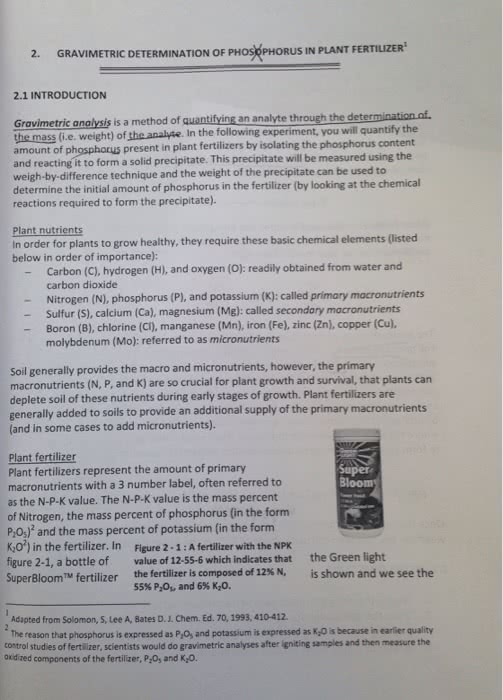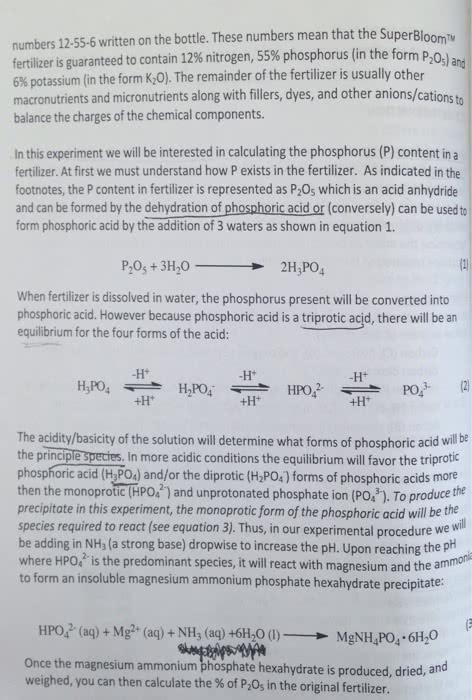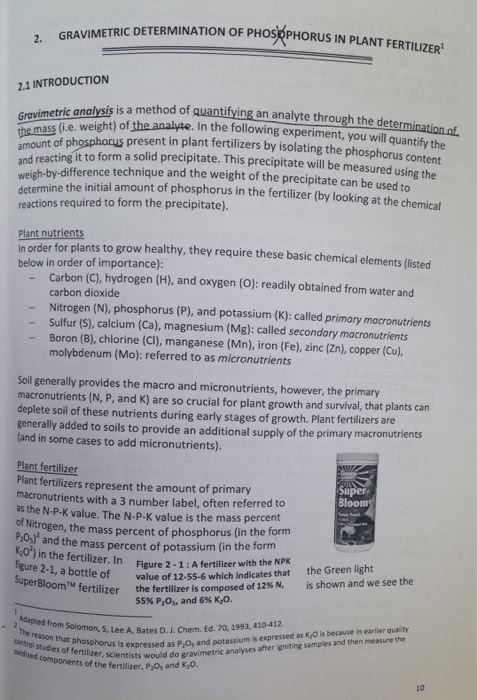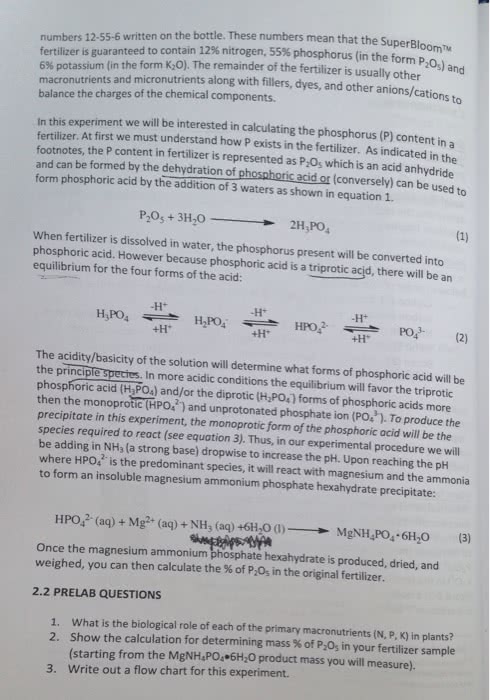Summarize the following reading (Nutrient (zinc and vitamin E)-gene interactions related to inflammatory and antioxidant response in aging and inflammation) and it should be at least one paragraph (100-200 words) and include the following information:
* Main point of the reading
* Describe how the health deviations you read about alter normal physiology.
* Provide your key take away from the reading. This could be something that made you pause, changed your thinking, supported your thinking, or made you question something.
INTRODUCTION Aging is an inevitable biological process that is accompanied by gradual and spontaneous biochemical and physiological changes including increased susceptibility to diseases, adverse environmental conditions, and loss of mobility and agility. Alterations in neuroendocrine-immune interactions as well as in antioxidant capacity also play a fundamental role in aging. The inability of an organism to remodel these changes may lead to the appearance of some degenerative age-related diseases. As a result, the remodeling theory of aging has been proposed (1). Various nutritional factors are directly linked to these phenomena, as, for instance, in restoring the neuroendocrine-immune network, metabolic harmony, and the capacity to respond to oxidative stress (2). Approximately 40 micro nutrients (vitamins, essential minerals, and other compounds required in small amounts for normal metabolism) have been reported as essential components in the diet (3). The dietary intake of essential macro nutrients and micronutrients is usually inadequate in the elderly (4). Several causes contribute to this gap. First of all, the poor socio-economic conditions in which a large part of the older population live may lead to a consumption of inexpensive foods deficient in micronutrients, such as carbohydrates (5). The gap is worsened by the loss of appetite, lack of teeth, intestinal malabsorption, and decreased requirements for energy that lead finally to frailty, disability, and mortality (6). Some authors have reported that the deficiency of macro nutrients and micronutrients in aging is strictly related to global impairments of immune functions, metabolic harmony, and antioxidant defense by external noxae with subsequent appearance of age-related diseases (7). Indeed, many micronutrients contribute directly or indirectly to the biological activity of some antioxidant enzymes (e.g., SOD, GPx, and catalase) (8), to the efficiency of the immune system (9), and to the maintenance of metabolic function especially in preventing mitochondrial decay (4). In this last context, feeding studies in older rats have shown that mitochondrial metabolites and antioxidants protect neuronal cells from neurotoxin- and oxidant-induced toxicity and oxidative damage, delay the normal senescence of human diploid fibroblasts, and inhibit the oxidant-induced acceleration of senescence (10). With advancing age, increased oxidative damage to proteins and lipid membranes, particularly in mitochondria, causes a deformation of the structure of enzymes, with a consequent decrease in enzyme activity as well as substrate binding affinity for their substrates. An increased level of the substrate by micro nutrients restores the speed of the reaction as well as mitochondrial function, thus delaying mitochondrial decay and aging (10, 11). In contrast, recent longitudinal studies of dietary daily intake in human nonagenarians and centenarians (successful aging) have shown that an adequate consumption of micronutrients and macronutrients, as well as a satisfactory content of some trace elements within the cells, leads to good performance in several immune functions, metabolic compensation, and preservation of antioxidant activity (12, 13). In this context, polyunsaturated fatty acids, highly sensitive to reactive oxygen species, decrease in liver mitochondria from human centenarians, a feature acquired during evolution as a protective mechanism to favor longevity (14). Therefore, nutritional factors may play a pivotal role for healthy aging and longevity. However, the effects of the nutritional factors are strongly influenced by genetic factors, in particular by the genes involved in inflammatory/immune responses. Proinflammatory cytokines such as IL-1, IL-6, and TNF-α; the antiinflammatory cytokine IL-10; the HSP70 chaperones; and the regulators of trace element homeostasis, metallothioneins (MTs), seem particularly relevant, taking into account that the same genes are involved in the susceptibility to major geriatric disease/disorders such as diabetes, osteoporosis, osteoarthritis, dementia, cardiovascular diseases, and infections (15, 16). Indeed this reemphasizes that up to 25% of the variation in human life span is heritable (17); the rest is due to environmental and lifestyle factors, which impact the aging process, contributing as such to a large interindividual variability. Therefore, one current challenge is to understand how the interaction between genetic factors and nutrients may influence aging and longevity, in view of the high impact on gene expression, protein production, and epigenetic mechanisms implicated in regulating the life span (18). Some dietary patterns with likely different impacts on longterm disease occurrence and survival have been identified. In this context, strong evidence for a beneficial effect of higher conformity with the Mediterranean dietary pattern on causes of death, including those of cardiovascular diseases and cancer, has been reported (19). Anyway, it is also commonly accepted that the complex interactions of multiple polymorphisms play a key role in how individuals may respond to dietary interventions (20). For each nutrient, there is a window of intake between the recommended dietary allowance (RDA), which is defined as the dietary intake sufficient to meet the requirements of 97% of healthy individuals in a particular stage of life and sex group, and the tolerable upper limit (UL), which is the highest nutrient intake that can be achieved without incurring a risk of adverse health effects for most individuals in the general population (21). Although worldwide research on genetic variations that require a different RDA or UL is still in progress, several genes and alleles have been suggested to affect nutrient utilization, including genes involved in the metabolism of folate and vitamin B12 (22), vitamin E (23), lipids (24), iron (25), and zinc (26). In this last case, it is important to note that the RDA (11 mg/day for men, and 8 mg/day for women) and UL (40 mg/day for adults) for zinc are very close (Food and Nutrition Board and Institute of Medicine, 2001). Without excluding the beneficial effects of all of these nutrients for healthy aging and longevity (27), but taking into account the pivotal role played by zinc and vitamin E in fighting oxidative stress in aging and in some age-related diseases, such as atherosclerosis (23), we herein report the studies carried out on the interrelationships between zinc and some genes related to the inflammatory/immune response (such as MT and IL-6), as well as the interactions between vitamin E and the gene expressions related to inflammation. Clinical trials of zinc and vitamin E are also reported for their possible beneficial effects on longevity or in preventing the initiation and progression of cardiovascular diseases.
ZINC-MT GENE INTERACTION MTs MTs are essential to intracellular zinc homeostasis by sequestration and release of the metal when it occurs and thereby controlling available free zinc ions (28). The cysteine sulfur ligands in the cluster structure of MT can be reduced (zinc sequestration) or oxidized (zinc release), thus with concomitant changes in the relative amount of bound and free zinc (29). MTs are genetically polymorphous protein families with subfamilies, subgroups, and various isoforms. Humans possess genes for 4 subfamilies (encoded by at least 10 functional MT genes), all located on chromosome 16: the brainspecific MT3, the squamous epitheliumâspecific MT4, and the ubiquitous MT1 and MT2 (30). One of the first functions of MT1 and MT2 is to regulate zinc homeostasis and to limit oxidative damage within the cells (28). Following an injurious stimulus, such as a transient inflammation, the subsequent oxidative stress induces the release of zinc from MT via nitric oxide (NO), to promote the activity and expression of antioxidant enzymes, including MT itself, thus reducing the oxidative damage and the consequences of the injurious stimulus (31). However, the increased expression of proinflammatory cytokines occurring in aging, leads to increased expression of MTs, which in turn sequester considerable amounts of zinc, making it less available for an efficient immune response (32). If, on the one hand, the reduced zinc ion availability in old age might indicate an excessive sequestration of zinc ions by MTs, on the other, consideration of recent findings on oxidative modification of MTs leading to their loss of function suggests also a mechanism whereby these proteins can also lose their ability to buffer the intracellular free zinc concentration (33). In this case, MTs would be unable either to bind or to consequently release zinc in response to stressors. However, it is still unclear if dysfunctional MTs can be considered a typical alteration associated with specific disease/disorders, such as hyperhomocysteinemia and type 2 diabetes, or if they are a common feature of aging. Anyway, as a consequence of the altered zinc metabolism, a large number of genes that act as zinc sensors and transcriptional activators and/or repressors are also altered in aging (34). This may have a deep impact on the regulation of zincdependent transcription factors, because they not only regulate âzinc sensitiveâ genes but also control their own transcription through positive autoregulatory mechanisms (35). Taking into account that healthy centenarians display a low MT expression and satisfactory zinc ion availability despite increases in proinflammatory cytokines (IL-6, TNF-α) (36), it may be suggested that this feature reflects the existence of compensatory phenomena able to counteract the effects of inflammation in these exceptional individuals. Moreover, these data suggest that a preservation of zinc homeostasis is an important feature of healthy centenarians. Therefore, the role played by the zinc-gene interaction is pivotal to successful aging and, at the same time, to escape from some age-related diseases. Since, the persistence of inflammatory stimuli over time represents the biological background favoring susceptibility to age-related diseases/ disabilities, the absence of specific ârobustâ gene variants and/or the presence of specific âfrailâ gene variants might predict, on the one hand, longevity, and on the other, the predisposition to the appearance of the more common age-related diseases, such as infections and cardiovascular diseases. In this context, it has to be considered that the genes selected, because they confer a reproductive advantage early in life, may have dangerous effects in the postreproductive period. In fact, negative selection against these harmful effects fails due to the decline of natural selection with age. This fact means that one gene that is âfavorableâ in young/adult age may be âdisadvantageousâ in aging (the antagonistic pleiotropy theory of ageing (37)). Following this perspective, the beneficial effect of inflammation, via an optimal MFT-1-MT-zinc-gene interaction, in young and adult age may become detrimental in old age (32). The recent discovery of novel polymorphisms of MT2A and MT1A supports this assumption. Indeed, older subjects carrying the AA genotype for the MT2A polymorphism display low zinc ion bioavailability, chronic inflammation by high IL-6 and altered lipid assessments, with subsequent elevated risk for atherosclerosis and type 2 diabetes (38). By contrast, a polymorphism corresponding to an A/T (asparagine/ threonine) transition at the +647 nt position in the MT1A-coding region is the most often involved in female longevity (39). Such allelic variants may be very useful tools to screen older subjects at risk for zinc deficiency on a genetic basis, taking into account that the actual methodological procedures to test âzinc statusâ are often misleading and that laboratory investigations to assay zinc ion bioavailability are scarcely reproducible and poorly applicable to clinical practice (40). In this context, a novel reproducible system for testing intracellular zinc ion bioavailability has been developed using a zinc fluorescent probe (Zynpir-1) associated with MT values, with both tests representing valid methods to detect the intracellular zinc status (41).
ZINCâINTERLEUKIN-6 GENE INTERACTION Interleukin-6 (IL-6) is a pleiotropic cytokine capable of regulating proliferation, differentiation, and activity of a variety of cell types, and it plays a pivotal role in immune response. In particular, the most important function of IL-6 is most likely as a mediator of acute phase inflammatory responses. These include the balance of the proinflammatory/antiinflammatory pathways, lymphocyte activation, and hepatocellular stimulation of acute phase protein synthesis (42). Studies of the effects of aging on inflammatory response show IL-6 to be an important âcytokine for gerontologistsâ. Recent evidence has shown that abnormally increased concentrations of IL-6 are reliable markers for functional disability and predictors of disability and mortality among the elderly (43). Moreover, IL-6 dysregulation is involved in age-related inflammatory diseases, such as cancer, lymphoma, cardiovascular diseases, osteoporosis, Alzheimerâs disease, diabetes and atherosclerosis (44). The human IL-6 gene is located on chromosome band 7p21 and consists of 5 exons and 4 introns (45). Genetic studies have identified 4 polymorphisms in the Lattanzio et al 121 promoter region of the IL-6 gene (-597G/A, -572G/C, - 373A/T, -174G/C) that have a significant effect on IL-6 expression in an in vitro system (46). A variable number of tandem repeat (VNTR) polymorphisms were found in the 3â flanking region of the IL-6 gene (C allele) (47). In humans, a polymorphism in the IL-6 promoter (A/C polymorphism at position -174) altered IL-6 gene transcription rates in vitro (48) and IL-6 levels in vivo (49). In this last paper, people carrying CC or GC genotypes are defined as C+, while those carrying GG genotypes are indicated as C-. It has been suggested that IL-6 -174G/C locus variability is capable of modulating, on the one hand, individual susceptibility to common causes of morbidity and mortality among elderly, while, on the other hand, it may play a crucial role in longevity (50). Therefore, the genetic variations of this locus of IL-6 gene are fundamental in the elderly population to better understand the intrinsic causes of the longevity. The association of these genetic variations to the possible, different immune responses is an attractive focus in elucidating the molecular mechanisms involved in immunosenescence. The genetic variations of the IL-6 -174G/C locus have been extensively studied by different groups with, however, contradictory data. Bonafè et al (51) studied IL-6 promoter genetic variability at the -174C/G locus and its effect on IL-6 levels in 700 Italians aged 60 to 110 years, including 323 centenarians. Individuals who are genetically predisposed to produce high levels of IL-6 during aging â i.e., C- men (GG genotype) â at the IL-6 -174C/G locus are disadvantaged for longevity. On the other hand, the capability of C+ individuals (CC and CG genotypes) to produce low levels of IL-6 throughout their life span appears to be beneficial for longevity, at least in men. Women have, conversely, high IL-6 serum levels later in life with respect to men, independently of -174C/G locus polymorphism (51). The inhibitory tone of estrogens on IL-6 gene expression could explain the sex-based difference (52), assuming that its long-term effects last until the extreme limits of the human life span. The major production of IL-6 in C- subjects for their whole life, including centenarians, has also been confirmed by other in vivo longitudinal studies (53). A more recent study in older and nonagenarian subjects has confirmed that IL-6 production is higher in C- carriers and that these subjects are prone to contract one of the more common age-related inflammatory pathologies such as atherosclerosis (54). Interestingly, in this last study, C- older and nonagenarian subjects also display impaired innate immune response (NK cell cytotoxicity) coupled with increased MT, zinc deficiency, and low zinc ion availability, in comparison with C+ carriers (54). A functional effect of the IL-6 -174G/C locus on MT expression and zinc-regulated genes has also been confirmed recently by targeted studies with in vitro and in vivo zinc supplementation (55, 56). These findings clearly suggest that the genetic variations of the IL-6 -174G/C locus play a key role in longevity also at a functional level, and confirm the existence of a higher number of C+ centenarians than Câ ones as previously found by Bonafè et al (51). In this context, an intriguing point is the low expression of the signal-transducing component (gp130) of the IL-6 receptor in centenarians, in comparison with the elderly, despite high circulating levels of IL-6 (57), which in turn may be inactive in centenarians (36). Therefore, inflammatory status is not so detrimental in very old age, as, in contrast, occurs in normal aging. However, the discrepancies among all of the genetic studies on the variations of the IL-6 -174G/C locus in relation to longevity in the elderly means that the subject is still unclear. Ethnic, lifestyle, and cultural differences among these populations could also play a role, as well as other undefined factors. Large-scale studies at the European level in many different ethnic populations are needed to clarify this important topic. For this reason, ZINCAGE project (www.zincage.org) has been developed, and the clarification of this point has been one of is tasks. The determination of the genetic variations of the IL-6 - 174G/C locus associated with a dietary assessment or with a comprehensive evaluation of zinc status has been reported as an useful strategy to identify older subjects who can benefit from zinc supplementation without health risks (see next paragraph).
ZINC SUPPLEMENTATION IN THE ELDERLY ON THE BASIS OF GENETIC BACKGROUND One possible cause of the discrepancies existing in the literature on the effect of zinc supplementation upon immune response and antioxidant performance in the elderly (see review in (58)) may be the choice of older subjects who effectively need zinc supplementation in strict relationship with dietary habits and inflammatory status. This fact is supported by the discovery that older subjects carrying GG genotypes (i.e., C- carriers) in the IL-6 -174G/C locus display increased IL-6 production, low intracellular zinc ion availability, and impaired innate immune responses coupled with enhanced MT (56). By contrast, older subjects carrying the GC and CC genotypes (C+ carriers) in the same IL-6 -174 locus display satisfactory intracellular zinc as well as innate immune responses. But, the more intriguing finding is that males carriers of the C+ allele are more likely to reach centenarian age than C- carriers. Therefore, older C- subjects are more likely to benefit from zinc supplementation than older C+ carriers. The distribution of the IL-6 -174 genotype is very different among the various European countries, with large differences between northern and southern European countries (58). Zinc supplementation in older C- subjects restores NK cell cytotoxicity to values present in older C+ carriers and considerably improves both zinc status, assessed by the percentage increment of granulocyte Zn (56), and stress response, assessed by the percentage increment of clusterin (CLU) expression and MT protein (58). When the genetic variations for the IL-6 polymorphism are also associated with the genetic variations of MT1A in position +647, the plasma zinc deficiency and the altered immune response are more evident (58), suggesting that the genetic variations of IL-6 and MT1A would be very useful tools for the choice of older people who effectively need zinc supplementation. These results open the hypothesis that the daily requirement for zinc might be different in elderly with a different genetic background. Such a role played by genetic background on the beneficial effects of zinc supplementation is also evident in the better control of proinflammatory cytokine and chemokine production (59), as well as in reducing the expression of genes related to inflammatory status, such as IL-1 and its receptor (55). A very intriguing point is also the beneficial effect of zinc supplementation in the cognitive performance of older individuals selected on the basis of IL-6 polymorphism (60). In any case, from a microarray analysis in vitro, zinc at a dose of 50 mM down-regulates the gene expression of proinflammatory cytokines (Fig. 1), strengthening its antiinflammatory role (56, 58).
Fig. 1 - In vitro zinc treatment (50 µM) down-regulates proinflammatory cytokine expression (custom array) when refereed to the value 1 (baseline control) in human peripheral blood mononuclear cells from young adult donors. The red square represents the proinflammatory cytokines (IL-6, IL-1, and TNF pathways). Data redrawn from the Zincage Project (www.zincage.org) (61).







